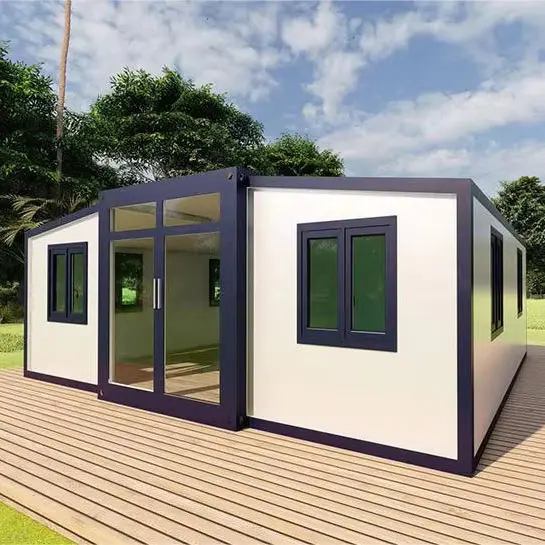How Do Expandable Container Houses Handle Insulation?
Expandable container houses have gained popularity due to their portability, cost-effectiveness, and quick assembly. However, one of the most crucial aspects of making these structures livable in various climates is insulation. Proper insulation ensures that the interior remains comfortable by preventing heat loss in winter and excessive heat buildup in summer.
In this blog, we’ll explore how expandable container houses handle insulation, the best insulation materials, and how they compare to traditional homes.
1. Why Is Insulation Important in Expandable Container Houses?
Unlike traditional homes, container houses are made of metal, which is a poor insulator. Without proper insulation, they can become:
- Too hot in summer (metal absorbs and retains heat)
- Too cold in winter (heat escapes quickly through the walls)
- Prone to condensation (temperature differences can cause moisture buildup, leading to mold)
To combat these challenges, proper insulation techniques are necessary to maintain a comfortable living space.

2. Types of Insulation Used in Expandable Container Houses
A. Spray Foam Insulation (Most Effective)
- Pros:
- Provides superior thermal insulation
- Seals gaps and prevents moisture buildup
- Adds structural reinforcement
- Cons:
- More expensive than other insulation types
- Requires professional installation
- Best for: Cold climates, humid areas, and energy-efficient homes
B. Rigid Foam Board Insulation
- Pros:
- Lightweight and easy to install
- Provides good thermal resistance
- Works well for walls, roofs, and floors
- Cons:
- Less effective at sealing gaps compared to spray foam
- Best for: Moderate climates and DIY projects
C. Fiberglass or Rock Wool Insulation
- Pros:
- Budget-friendly and widely available
- Provides decent thermal and sound insulation
- Cons:
- Can absorb moisture, leading to mold issues
- Requires vapor barriers to prevent condensation
- Best for: Interior insulation in dry climates
D. Reflective Insulation (Radiant Barrier)
- Pros:
- Effective in hot climates
- Reflects heat rather than absorbing it
- Cons:
- Not effective for cold weather insulation
- Best for: Tropical or desert environments
3. How Insulation Is Applied in Expandable Container Houses
Expandable container houses are designed to fold and unfold, so insulation must be applied in a way that does not interfere with their portability. Here’s how it’s done:
1. Wall Insulation:
- Most expandable container homes have pre-insulated wall panels with built-in foam or fiberglass insulation.
- Some models use double-layered walls to enhance insulation.
2. Roof Insulation:
- A layer of rigid foam board or spray foam is applied under the roofing material to prevent heat from radiating into the living space.
- In hot climates, a reflective barrier is added to deflect sunlight.
3. Floor Insulation:
- Insulated flooring panels prevent heat loss through the bottom of the container.
- Foam board or fiberglass is commonly used.
4. Sealing Gaps and Windows:
- Weather stripping and caulking are used to seal any air leaks.
- Double-glazed windows help improve energy efficiency.
4. Final Thoughts: Are Expandable Container Houses Well-Insulated?
Yes, expandable container houses can be well-insulated if the right materials and techniques are used. While the metal structure presents some insulation challenges, using spray foam, rigid board, or fiberglass insulation can create a comfortable and energy-efficient living space.
When choosing an expandable container house, it’s essential to check what insulation is included and whether you need additional upgrades for extreme weather conditions.
Ante House always believe in the management philosophy of quality and multi-win, Ante build up its strong reputation in the market. We sincerely hope to work with you for a bright future here, and look forward to being of your service. Ante house had passed ISO 9001:2008 system, China Compulsory Certificate (CCC) certification and CE Certificate. offer a comprehensive after-sales service package, including onsite inspection, online technical support, onsite training, onsite installation, free spare parts, and return and replacement, ensuring your complete satisfaction. Our factory focuses on QC management and new products development, we have 6 engineers who have more than 10 years’ experience, we can do the CAD or 3D design according your detail requirements, we will do our best to support you.Visit our website at www.ante-house.com to learn more about our products. For inquiries, you can reach us at leo@ante-house.com.





